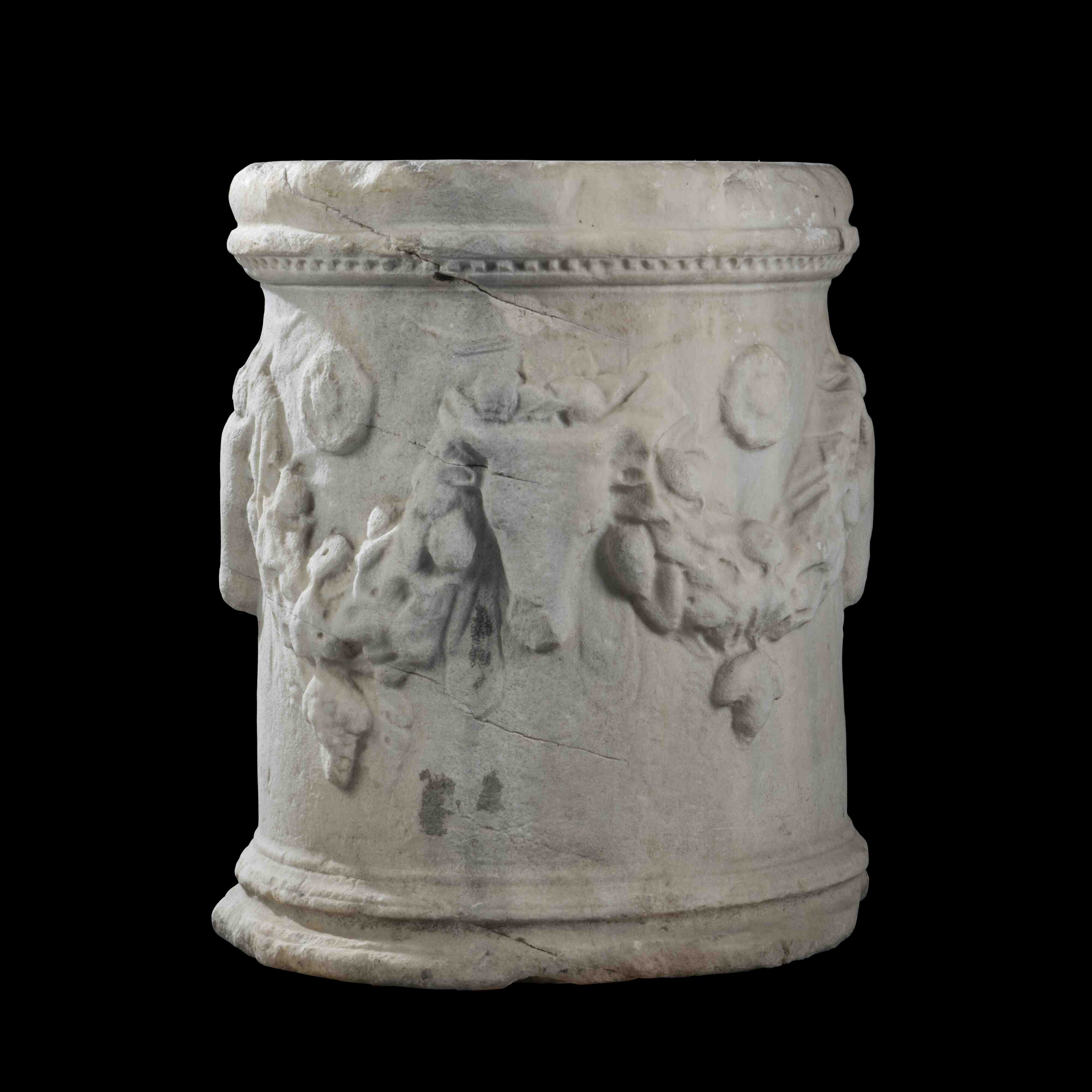Etruscan red-figure kylix of type A attributed to the Foro-Group
32 cm diam w. handle
Münzen und Medaillen AG, Basel, 1984
Private collection, Switzerland
Ars Amatoria. The art of love in antiquity, 2019, 33 no. 36
The tondo is decorated with an erotic scene with a standing satyr embracing a hetaera, both are nude save for their sandals, in the field behind the satyr a calyx krater rests on rocky ground, at the hetaera’s right foot a rock, encircled within a band of meander separated by two checkered squares; tongue decoration on the exterior. Rare example of the expressive late Etruscan vase painting.
Note
A number of Etruscan red-figure kylikes can be attributed to the so-called Clusium Group. (cf. Leonore Stege, Die Kunst der Etrusker. Interversa Hamburg, Ausstellung Aug.-Oct. 1981, no. 102 and Holger Termer, Kunst der Antike 2, Hamburg, Ausstellung Nov.-Dec. 1980, no. 57). The anonymous painters of the group are so called because their workshop appears to have been centred around Chiusi. Their main specialisation were cups, duck askoi and kantharoi. Late red-figure kylikes are extremely rare; J.D. Beazley knows only eight specimens of which some are only known from fragments (J.D. Beazley, Etruscan Vase Painting, 143, 18-19; 165,5; 174,1-2)









